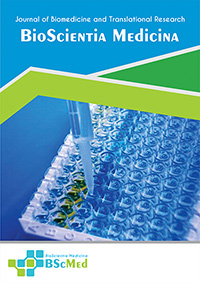Main Article Content
Abstract
Background: Anesthetic management for cesarean delivery in parturients with concurrent nephrotic syndrome and decompensated heart failure presents a profound clinical challenge. Severe anasarca can obliterate anatomical landmarks, while complex cardiorenal pathophysiology creates a state of extreme hemodynamic fragility. This case report describes a systematic, ultrasound-guided approach to overcome these obstacles.
Case presentation: A 15-year-old primigravida at 33 weeks gestation, with new-onset nephrotic syndrome and decompensated heart failure (NYHA Class III), required an emergency cesarean section. Clinical examination revealed severe anasarca, rendering lumbar spinal landmarks impalpable. A systematic pre-procedural lumbar ultrasound examination was performed using a low-frequency curvilinear transducer. This allowed for precise identification of the L3-L4 interspace and an accurate skin-to-dura depth measurement of 4.6 cm. A single-attempt subarachnoid block was successfully performed with a reduced dose (10 mg) of hyperbaric bupivacaine. An adequate T4 sensory block was achieved for surgery. The patient remained remarkably hemodynamically stable throughout the procedure, with no episodes of hypotension requiring vasopressor support. A healthy infant was delivered, and both maternal and neonatal outcomes were excellent.
Conclusion: This case demonstrates that a systematic pre-procedural ultrasound protocol is an indispensable tool for enhancing the safety and success of neuraxial anesthesia in high-risk obstetric patients. By enabling precise anatomical localization and informed dose reduction, it mitigates procedural risk and supports hemodynamic stability in the face of distorted anatomy and severe cardiorenal comorbidities.
Keywords
Article Details
As our aim is to disseminate original research article, hence the publishing right is a necessary one. The publishing right is needed in order to reach the agreement between the author and publisher. As the journal is fully open access, the authors will sign an exclusive license agreement.
The authors have the right to:
- Share their article in the same ways permitted to third parties under the relevant user license.
- Retain copyright, patent, trademark and other intellectual property rights including research data.
- Proper attribution and credit for the published work.
For the open access article, the publisher is granted to the following right.
- The non-exclusive right to publish the article and grant right to others.
- For the published article, the publisher applied for the Creative Commons Attribution-NonCommercial-ShareAlike 4.0 International License.





